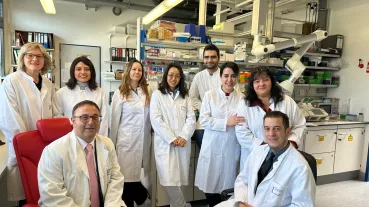"This one drink!?" The invisible developmental consequences of intrauterine alcohol exposure: A longitudinal multi-level study in childhood and adolescence based on a meconium ethanol metabolite

The child's first environment that has a lifelong influence on development is the intrauterine environment. Alcohol consumption during pregnancy is one of the best documented prenatal risk factors for child development. We use a biomarker to investigate the underlying mechanisms and alcohol-induced developmental consequences: Ethylglucuronide is an ethanol metabolite and can be detected in the first stool (meconium) of the newborn. In the FRANCES sample, there are n = 248 children whose mothers participated in the FRAMES study during pregnancy. After a first assessment wave during primary school age, the children – between 11 to 13 years today - will be examined again: Are the childhood impairments still present in adolescence? What are the risk or protective factors? Our project stands out through the cooperation between gynecologists, adult psychiatrist and child and adolescent psychiatrist, integrating knowledge on pregnancy, maternal and child mental health.







